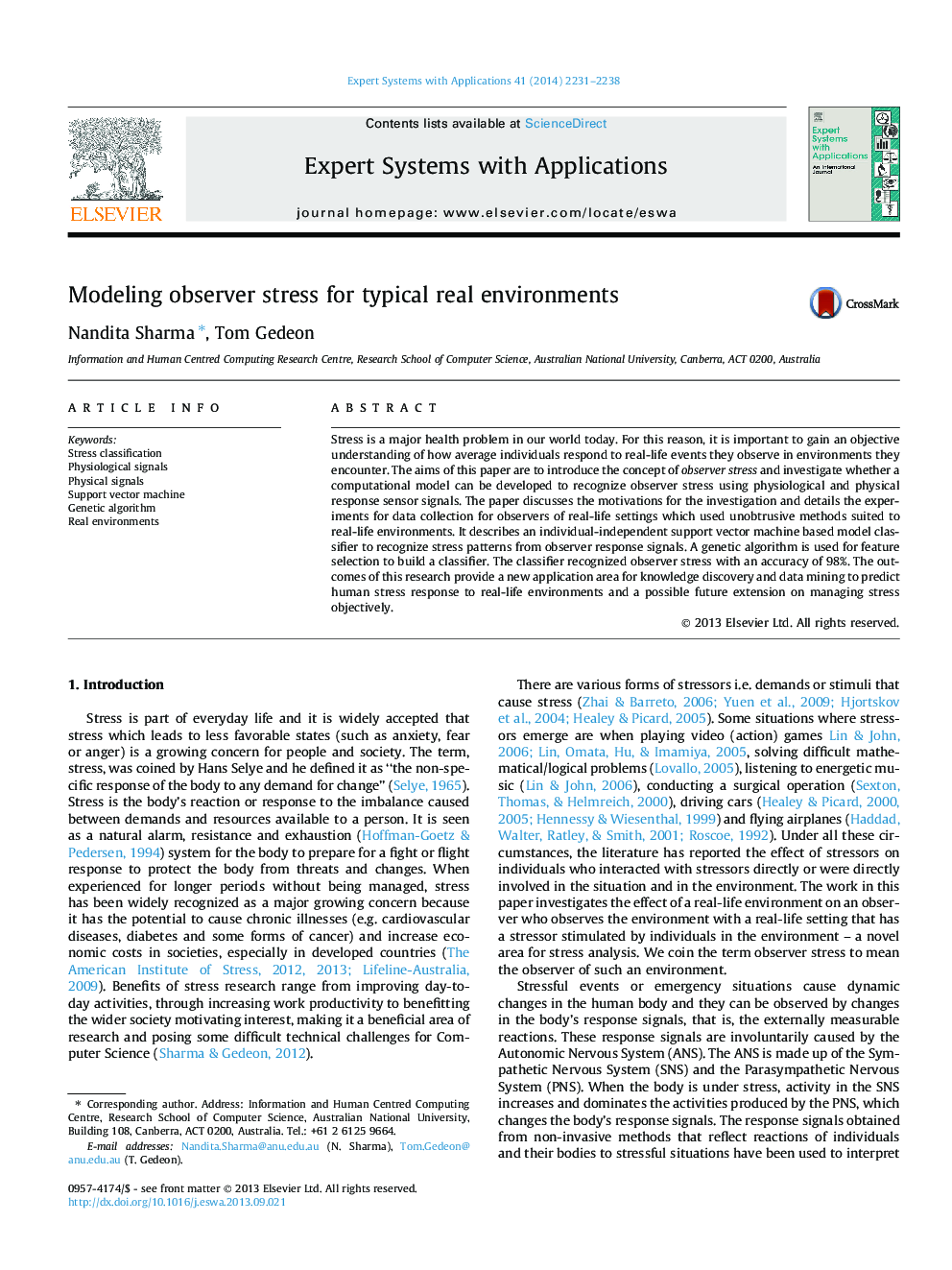| کد مقاله | کد نشریه | سال انتشار | مقاله انگلیسی | نسخه تمام متن |
|---|---|---|---|---|
| 383063 | 660801 | 2014 | 8 صفحه PDF | دانلود رایگان |
• Proposed a computational model system for observer stress for real-life events.
• System input includes a novel set of multi-sensor physiological & physical signals.
• System is based on a support vector machine and a genetic algorithm.
• Real-world stress data was acquired for interview and meditation settings.
• Signals captured for the stress model were EEG, skin conductivity, thermal videos.
Stress is a major health problem in our world today. For this reason, it is important to gain an objective understanding of how average individuals respond to real-life events they observe in environments they encounter. The aims of this paper are to introduce the concept of observer stress and investigate whether a computational model can be developed to recognize observer stress using physiological and physical response sensor signals. The paper discusses the motivations for the investigation and details the experiments for data collection for observers of real-life settings which used unobtrusive methods suited to real-life environments. It describes an individual-independent support vector machine based model classifier to recognize stress patterns from observer response signals. A genetic algorithm is used for feature selection to build a classifier. The classifier recognized observer stress with an accuracy of 98%. The outcomes of this research provide a new application area for knowledge discovery and data mining to predict human stress response to real-life environments and a possible future extension on managing stress objectively.
Journal: Expert Systems with Applications - Volume 41, Issue 5, April 2014, Pages 2231–2238
